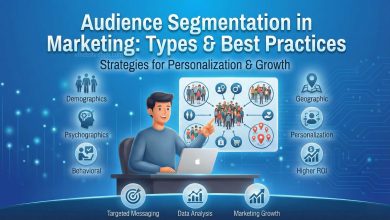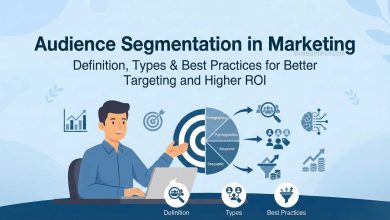What is CDP Advertising : The Future of Personalized Marketing : Comprehensive Guide 2025
CDP Advertising : In 2025, Customer Data Platform (CDP) advertising is revolutionizing the digital marketing landscape. With the increasing need for data-driven marketing, businesses are leveraging CDPs to create hyper-personalized ad campaigns, improve customer segmentation, and maximize ROI. This essay explores the role of CDP advertising, its impact on digital marketing strategies, and how brands can harness its potential for growth and success.
Table of Contents
What is CDP Advertising?
A Customer Data Platform (CDP) is a centralized system that collects, organizes, and unifies customer data from multiple sources. Unlike CRM (Customer Relationship Management) and DMP (Data Management Platform), a CDP creates a 360-degree customer view by integrating first-party, second-party, and third-party data in real time.
CDP advertising refers to the use of this rich customer data to optimize ad targeting, personalize marketing campaigns, and increase engagement. In 2025, businesses are leveraging AI-powered CDPs to enhance programmatic advertising, omnichannel marketing, and predictive analytics.
Why is CDP Advertising Essential in 2025?

1. The Rise of First-Party Data Marketing
With the phasing out of third-party cookies, brands are shifting toward first-party data strategies. CDPs help marketers collect customer insights from websites, apps, social media, and offline interactions, allowing for precise audience segmentation and privacy-compliant advertising.
2. AI and Machine Learning in Advertising
In 2025, AI-driven CDPs are enabling real-time customer profiling and automated ad optimization. Businesses are using predictive analytics to anticipate customer behavior and deliver personalized content across multiple platforms.
Also Read: Best 5 AI Marketing Automation Tools
3. Omnichannel Advertising Strategies
A CDP-powered omnichannel strategy ensures seamless customer experiences across:
- Social media ads (FB, Insta,etc.)
- Google Ads and Search Engine Marketing (SEM)
- Email marketing automation
- Programmatic advertising and real-time bidding (RTB)
- E-commerce retargeting ads
With a CDP, brands can track customer interactions and deliver consistent messaging across all digital touchpoints.
4. Data-Driven Personalization at Scale
CDPs enable hyper-personalized marketing by:
- Creating detailed customer personas based on behavior and demographics
- Delivering dynamic ad creatives tailored to individual users
- Enhancing conversion rates with AI-driven ad recommendations
A well-optimized CDP ensures that the right message reaches the right audience at the right time.
How CDP Advertising is Transforming Digital Marketing?

1. Advanced Customer Segmentation
CDPs use behavioral segmentation to group audiences based on:
- Purchase history
- Browsing patterns
- Engagement levels
- Demographic data
This enables businesses to create highly targeted ad campaigns and reduce ad spend wastage.
2. Predictive Analytics for Smarter Marketing Decisions
CDPs in 2025 are powered by AI-driven predictive analytics, allowing businesses to:
- Identify high-value customers
- Forecast purchasing behavior
- Optimize advertising budgets
- Improve customer lifetime value (CLV)
Marketers can now anticipate customer needs and serve them the most relevant ads before they even search for a product.
3. Real-Time Ad Optimization
CDPs allow for real-time ad adjustments based on customer actions. For example:
- If a user abandons their cart, they receive automated retargeting ads.
- If a customer clicks on a product ad, the system adjusts ad frequency to avoid ad fatigue.
- AI-powered A/B testing ensures that the best-performing ad variations are prioritized.
4. Privacy-First Advertising
With GDPR, CCPA, and other data privacy regulations, brands need compliant marketing strategies. CDPs ensure secure data management, helping brands deliver personalized ads while respecting user privacy.
CDP Advertising Best Practices for 2025
1. Integrate CDP with Your Advertising Ecosystem
To maximize efficiency, integrate your CDP with:
- Google Analytics 4 (GA4) for tracking website visitor behavior
- Meta Business Suite for FB and Insta advertising
- Google Ads and Demand-Side Platforms (DSPs) for programmatic advertising
- E-commerce platforms (Shopify, WooCommerce, etc.) for personalized product recommendations
2. Leverage AI-Powered Customer Insights
Use AI-driven CDPs to analyze customer sentiment, engagement trends, and purchase intent. This allows brands to adjust ad creatives, offers, and messaging dynamically.
Buy Now : Professional Digital Marketing Course
3. Focus on Customer Retention and Loyalty
CDP advertising isn’t just about acquiring new customers—it’s about retaining existing ones. Implement:
- Loyalty-based ad campaigns
- Personalized remarketing strategies
- Exclusive offers for high-value customers
4. Optimize Ad Spend with Data-Driven Decisions
CDPs provide real-time ROI tracking, allowing businesses to:
- Allocate budgets effectively
- Reduce wasted ad spend
- Optimize cost-per-acquisition (CPA) and return on ad spend (ROAS)
5. Test and Improve Campaigns Continuously
A/B test different ad creatives, messages, and targeting parameters to identify what resonates best with your audience.
The Future of CDP Advertising in 2025 and Beyond

1. Integration with the Metaverse and AR/VR Advertising
CDPs will soon power personalized ads in virtual environments such as Meta’s Metaverse, AR shopping platforms, and VR gaming experiences.
2. Voice Search and AI Chatbots in Ad Targeting
With the rise of voice search (Google Assistant, Alexa, Siri), CDPs will help brands create AI-driven voice search ads and chatbot-assisted personalized promotions.
3. Blockchain for Data Security in Advertising
Blockchain-based CDPs will offer transparent data collection and improved consumer trust, ensuring privacy-first marketing strategies.
4. Hyper-Personalized Video and Interactive Ads
AI-powered CDPs will enable real-time video ad personalization, tailoring content based on user preferences, location, and past interactions.
Conclusion
CDP advertising is reshaping the future of digital marketing by providing data-driven personalization, real-time insights, and seamless omnichannel experiences. As brands navigate 2025’s privacy challenges and AI advancements, leveraging AI-powered CDPs will be the key to success in digital advertising.
Buy Now : Professional Digital Marketing Course
Marketers who embrace CDP-driven advertising strategies will stay ahead of the competition, maximize ROI, and build long-term customer relationships in an era of privacy-first, AI-powered marketing.



